Unmunsa Temple – 운문사 (Cheongdo, Gyeongsangbuk-do)
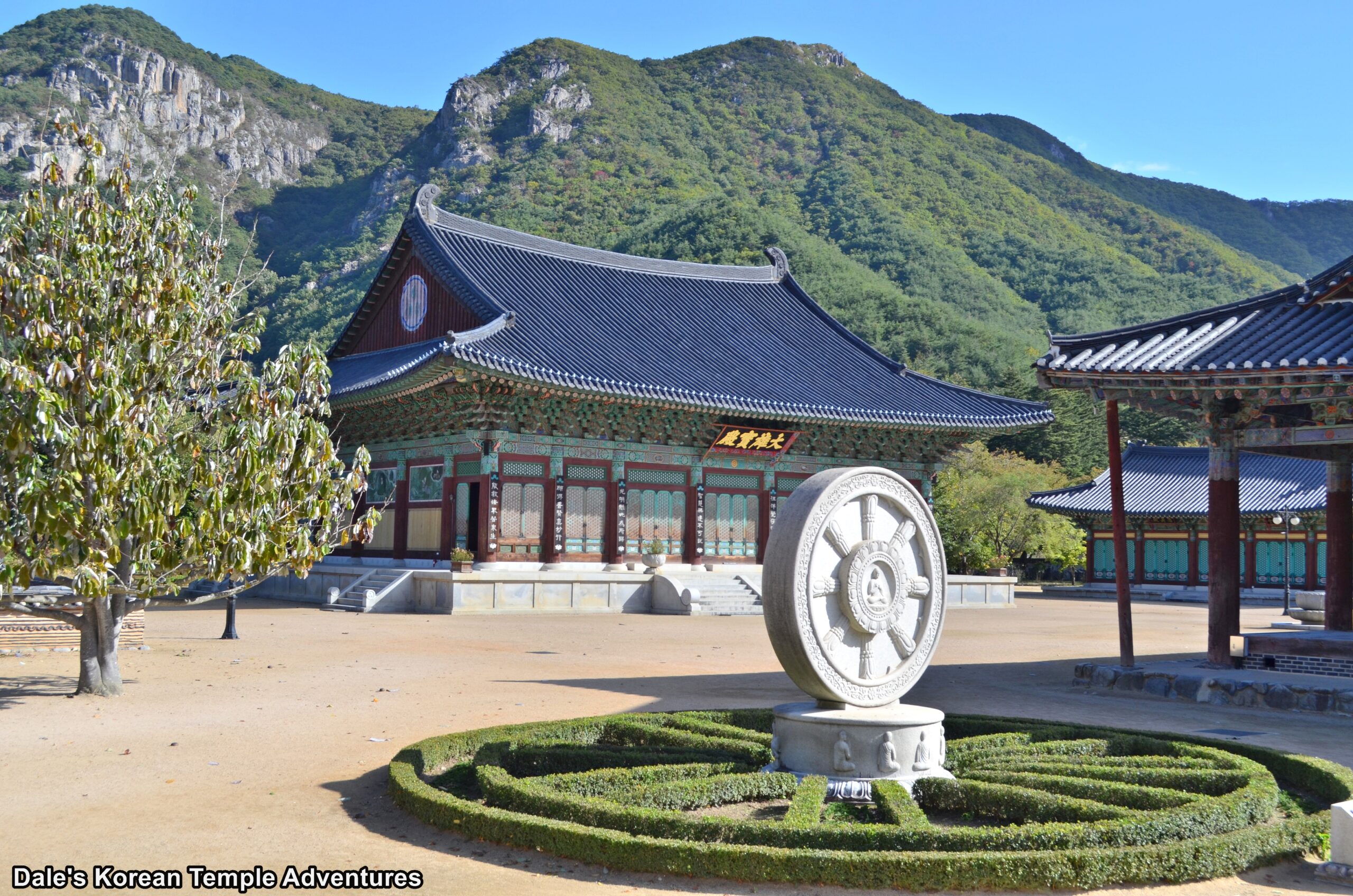
Temple History
Unmunsa Temple, which means “Cloud Gate Temple” in English, is located in Cheongdo, Gyeongsangbuk-do. Specifically, Unmunsa Temple is located to the north of Mt. Gajisan (1240.9m). The temple was first built over a three year period starting in 557 A.D. by the monk Sinseung. At first, it was nothing more than a hermitage. The temple was later rebuilt by the monk Wongwang-guksa (558-638 A.D.) in 608 A.D. Originally, the temple was named Daejakgapsa Temple, or “Great Magpie Hillside Temple,” in English.
The monk Boyang-guksa reconstructed Unmunsa Temple in 930 A.D. The founder of the Goryeo Dynasty, King Taejo (r.918-943 A.D.), granted Boyang-guksa 500 gyeol (or 17,000 square metres) of additional land for helping Wang Geon unify the three kingdoms (Baekje, Goguryeo, and Silla) and become King Taejo. King Taejo, in 937 A.D., renamed the temple Unmunseonsa, but it was later abbreviated to Unmunsa.
In 1105, Woneung-guksa (1052-1144) rebuilt Unmunsa Temple, which marked the most prosperous period in the temple’s history, after returning to the Korean peninsula from Song Dynasty China. In 1277, the famed monk Ilyeon-seonsa (1206-1289), the writer of the Samguk Yusa (Memorabilia of the Three Kingdoms), was the head monk, or “juji,” in Korean, at Unmunsa Temple until 1281. Unmunsa Temple is also where he started to write the Samguk Yusa. In fact, there used to be a monument dedicated to Ilyeon-seonsa in the eastern part of the temple grounds, but it no longer exists, unfortunately.
During the middle of the Joseon Dynasty (1392-1910), Unmunsa Temple was partially destroyed during the Imjin War (1592-1598) in 1592. Strangely, there seems to be no temple records from the late Joseon Dynasty. However, a temple layout document was discovered during the repair of the Biro-jeon Hall, formerly the Daeungbo-jeon Hall, in 2006. It was revealed from this document that twenty-seven buildings existed in 1655 at Unmunsa Temple. The temple was rebuilt and reconstructed by Seolsong Yeoncho during the 18th century. It’s believed that the neighbouring Naewonam Hermitage was rebuilt in 1694 as were the main shrine halls at Unmunsa Temple. Throughout the 19th century, shrine halls at Unmunsa Temple were reconstructed like the Eungjin-jeon Hall and the Myeongbu-jeon Hall.
After the Korean liberation from Japanese Colonial rule in 1945, married monks (daecheoseung) stayed at Unmunsa Temple. However, starting in 1954, during the Buddhist Purification Movement in Korea, Unmunsa Temple became a temple for nuns. In 1955, the first nun was named abbot of the temple. In 1958, Unmunsa Temple became a training centre for nuns. Currently, there are three hundred nuns that call Unmunsa Temple home with an additional forty monks that are students attending the Unmun Sangha University.
In total, Unmunsa Temple is home to nine Korean Treasures and one Natural Monument.
Temple Layout
As you make your way up to the main temple grounds, you’ll pass under a beautiful canopy of twisted red pine trees. This pathway also runs alongside the meandering Unmun-cheon River. Rather uniquely, you approach the temple from the rear with the main hall’s back to you. You’ll have to skirt the northern brick wall to the left, and make your way under the Uhwa-ru Pavilion. This pavilion has a dual purpose. The first is that you gain admittance to the temple courtyard through the first floor. And the second purpose is that it houses the temple’s bell pavilion on the second floor.
Finally standing inside the main temple courtyard, you’ll notice the temple’s gift shop to your immediate right. And to the left you’ll find an amazing part of Unmunsa Temple’s past: the biseok (stele) dedicated to Woneung-guksa. This 2.3 metre tall biseok was first built in 1145 A.D., one year after the passing of Woneung-guksa, and it’s also Korean Treasure #316.
Straight ahead of you is the massive Manse-ru, or “Ten Thousand Times Pavilion” in English. Traditionally, these pavilions are used for large dharma conferences or gatherings. On the far left side, you’ll see a large painting housed inside the Manse-ru Pavilion of Seokgamoni-bul (The Historical Buddha). And surrounding Seokgamoni-bul in this painting are children. The Manse-ru Pavilion also acts as a barrier between the upper and lower courtyard. To the left of the Manse-ru Pavilion, you’ll find the lower courtyard at Unmunsa Temple, and to the right you’ll find the upper courtyard. Next to the Manse-ru Pavilion is a large weeping pine tree. While the exact age of this tree is unknown, it’s believed to be at least four hundred years old, as it was tall during the Imjin War. This weeping pine at Unmunsa Temple is Natural Monument #180.
To the right, and towards the upper temple courtyard, you’ll come across the Eungjin-jeon Hall. The rather plain interior is filled with statues of the Nahan (The Historical Disciples of the Buddha). And resting on the main altar are a triad of statues centred by Seokgamoni-bul. This statue is joined on either side by Yeondeung-bul (The Past Buddha) and Mireuk-bul (The Future Buddha).
Just past the Eungjin-jeon Hall, you’ll see the Daeungbo-jeon Hall. This beautiful main hall’s exterior walls are adorned with Palsang-do (Eight Scenes from the Buddha’s Life Murals). The newly built Daeungbo-jeon Hall, which was built in 1994, is grand in size and scope. Resting inside the cavernous main hall are seven seated and standing statues dedicated to various Buddhas and Bodhisattvas. The three central statues are Seokgamoni-bul, Mireuk-bul, and Yeondeung-bul. They are joined by Daesaeji-bosal (The Bodhisattva of Wisdom and Power for Amita-bul), Bohyeon-bosal (The Bodhisattva of Power), Munsu-bosal (The Bodhisattva of Wisdom), and Gwanseeum-bosal (The Bodhisattva of Compassion).
With the Manse-ru Pavilion now to your left, and passing by a beautiful stone eight spoke Buddhist wheel, which is better known as the Dharma Wheel, lies the Biro-jeon Hall. This shrine hall was formerly the Daeungbo-jeon Hall, and Unmunsa Temple’s former main hall. It was originally built in 1718, and it’s Korean Treasure #835. The exterior walls to this hall are beautifully adorned with Palsang-do (The Eight Scenes from the Buddha’s Life Murals). As for the interior, and sitting all alone on the main altar, is a beautiful Birojana-bul (The Buddha of the Cosmic Energy) statue. The interior walls are adorned with murals of Gwanseeum-bosal and the Bodhidharma. These two paintings were painted sometime between the late seventh century and the early eighth century. And the two are Korean Treasure #1817. Also, the rafters and walls are intricately adorned with floral murals.
To the left of the Biro-jeon Hall is the Obaek-jeon Hall, which houses five hundred Nahan (The Historical Disciples of the Buddha). This shrine hall symbolically represents the First Buddhist Council, which was conducted after the death of the Buddha in 400 B.C. It was convened so that the Buddha’s sayings, sutras, and the monastic discipline/rules could be recorded. The Nahan are joined by a golden Seokgamoni-bul statue on the main altar. The exterior walls have simplistic Shimu-do (Ox-Herding Murals) on them. But while they’re simplistic, they’re also masterful in their artistry.
In front of the Biro-jeon Hall, you’ll find twin pagodas. Known as the East and West Three-Story Stone Pagodas of Unmunsa Temple, these twin pagodas date back to the Silla Dynasty (57 B.C. to 935 A.D.). Repair work was completed on these pagodas during Japanese Colonial Rule (1910-1945), as the pagodas were nearly ruined at this time. It was also at this time that the ancient pagodas were given a bit of a face-lift with the addition of the Eight Guardian Deities around each of the twin pagoda’s bases. These Silla-era pagodas are Korean Treasure #678.
Past these twin ancient pagodas, there are a handful of smaller sized shrine halls. The first is the Jakap-jeon Hall. Housed inside this diminutive shrine hall is a statue dedicated to Seokgamoni-bul. The early 10th century Buddha stone statue is Korean Treasure #317, and the statue of the Buddha is surrounded by a beautiful stone nimbus. Also housed inside this shrine hall are stone reliefs of the Cheonwang (Heavenly Kings). These reliefs stand like sentinels in front of the ancient statue of the Buddha. These reliefs are thought to have been made some time around 900 A.D. They are Korean Treasure #318. And if you look close enough at what the Cheonwang are holding in their hands, you’ll realize that some of them are different than the ones we’ve grown to expect at temples today. The reason for this is that this standard of objects being held by the Heavenly Kings didn’t become common place until the Yuan Dynasty in China (1271-1368). You can also see this at other temples and hermitages that have an older collection of statues or reliefs of the Cheonwang like at Songgwangsa Temple in Suncheon, Jeollanam-do and Seokguram Hermitage in Gyeongju.
To the right of the Jakap-jeon Hall, you’ll find another diminutive hall, especially for who is housed inside. This hall, the Gwaneum-jeon Hall, houses a rather squat statue of Gwanseeum-bosal, who sits all along on the main altar. The interior walls are adorned with beautiful white incarnations of the Bodhisattva of Compassion. The other two shrine halls in this area are the Myeongbu-jeon Hall and the Chilseong-gak Hall. Inside the Myeongbu-jeon Hall is a green-haired statue of Jijang-bosal (The Bodhisattva of the Afterlife). This statue is joined on both sides by the Shiwang (The Ten Kings of the Underworld). And to the right of the Myeongbu-jeon Hall is the Chilseong-gak Hall. Rather uniquely, there are seven paintings that represent Chilseong (The Seven Stars). These paintings are joined by a rather plain painting of Sanshin (The Mountain Spirit), and an older and more intricate mural of Dokseong (The Lonely Saint).
The rest of the temple grounds at Unmunsa Temple are off-limits to visitors, as the temple is in fact a fully functioning Buddhist training centre for nuns.
How To Get There
You can get to Unmunsa Temple from the Cheongdo Intercity Bus Terminal. The bus that runs to Unmunsa Temple from Cheongdo Intercity Bus Terminal runs eight times a day. The first bus leaves at 7:40 a.m., and the last bus leaves at 7:30 p.m.
Overall Rating: 9/10
Unmunsa Temple is filled with stunning and historic buildings. The temple is surrounded by beautiful mountains, too. Take your time, enjoy the massive Daeungbo-jeon Hall, the Biro-jeon Hall, and the Obaek-jeon Hall. In addition to these halls, there’s a beautiful pavilion, twin pagodas, a historic statue dedicated to the Buddha, and four relief stone images of the Four Heavenly Kings. Unmunsa Temple is especially beautiful during the fall months.
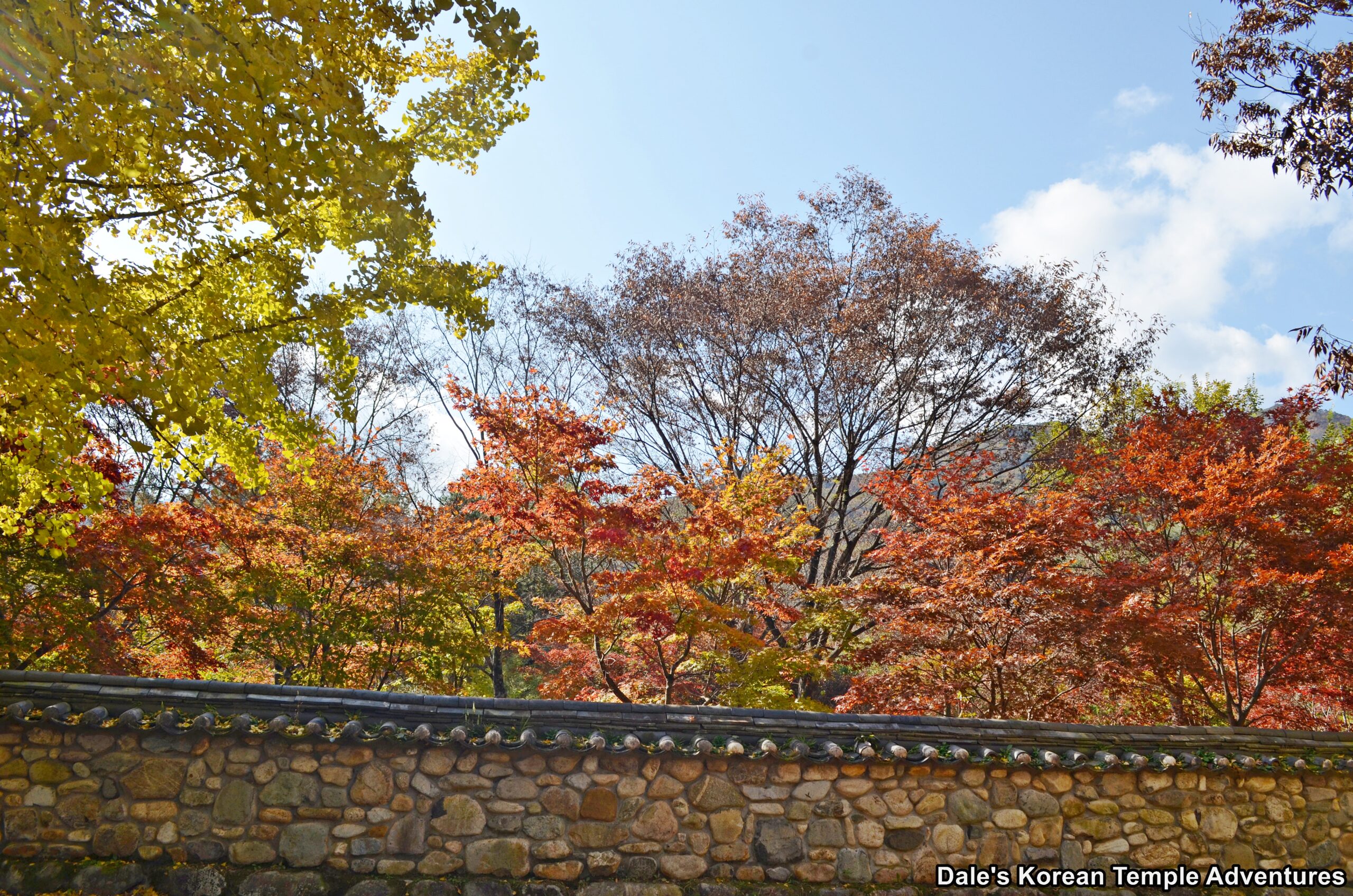
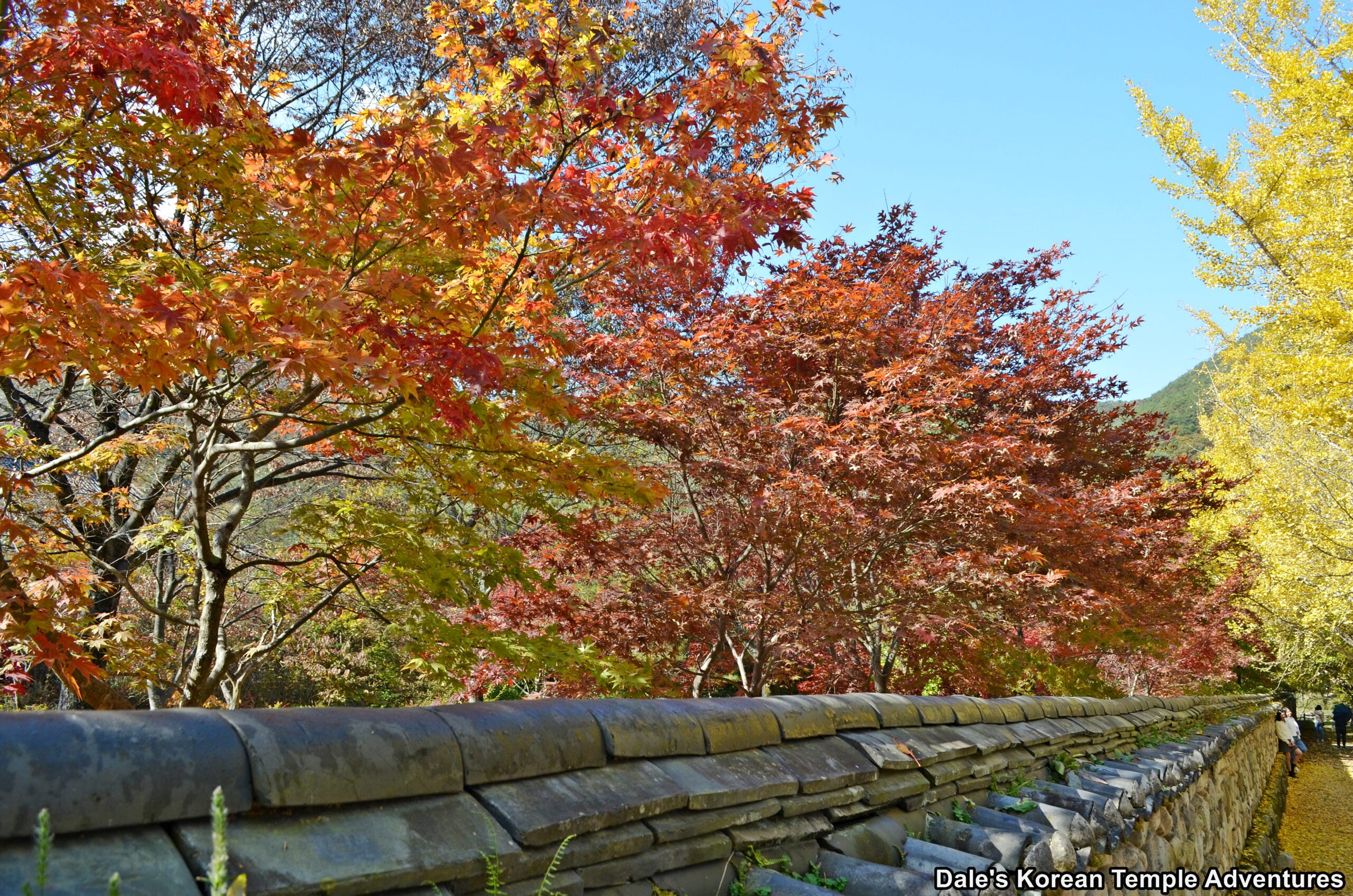
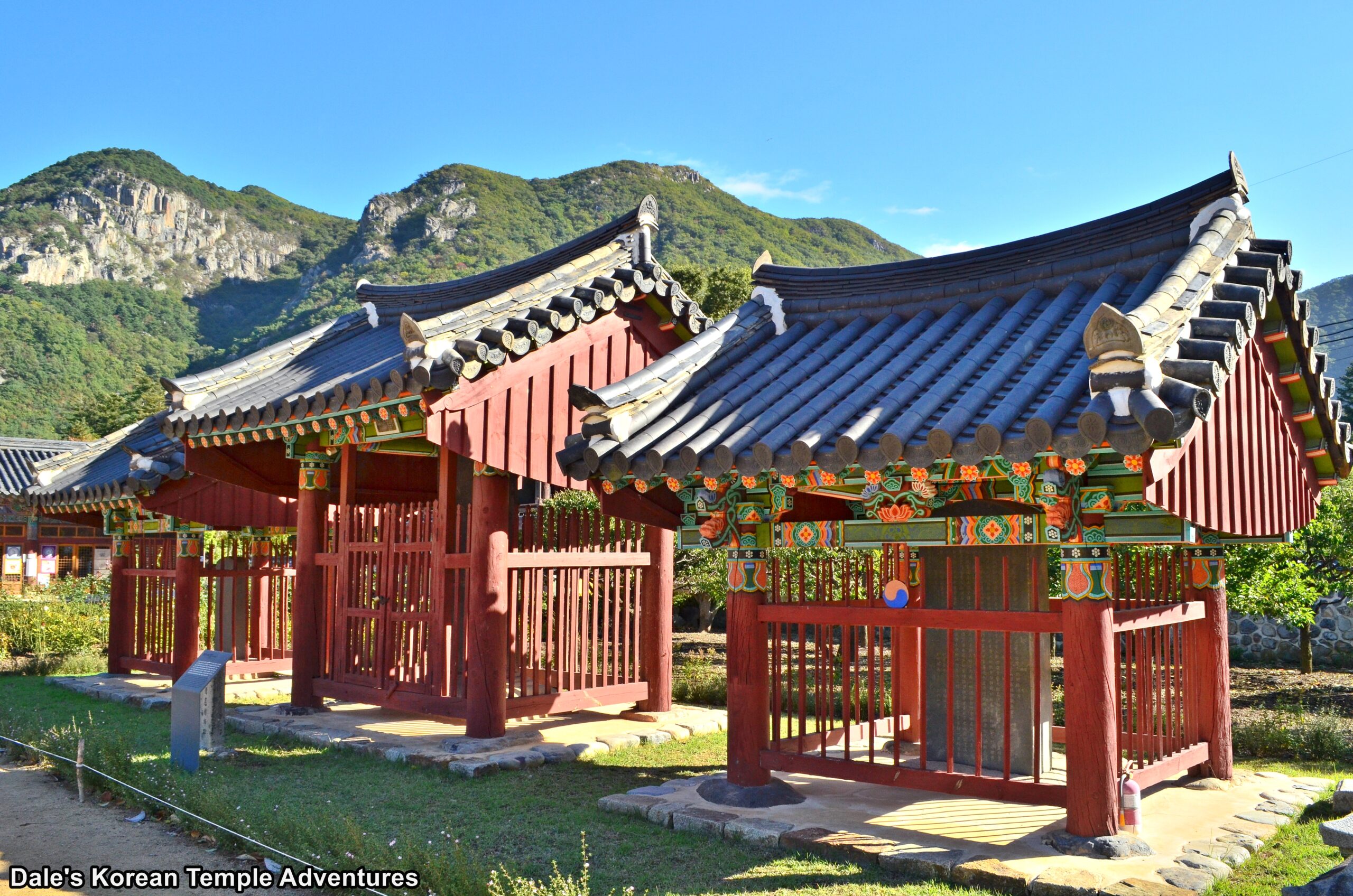
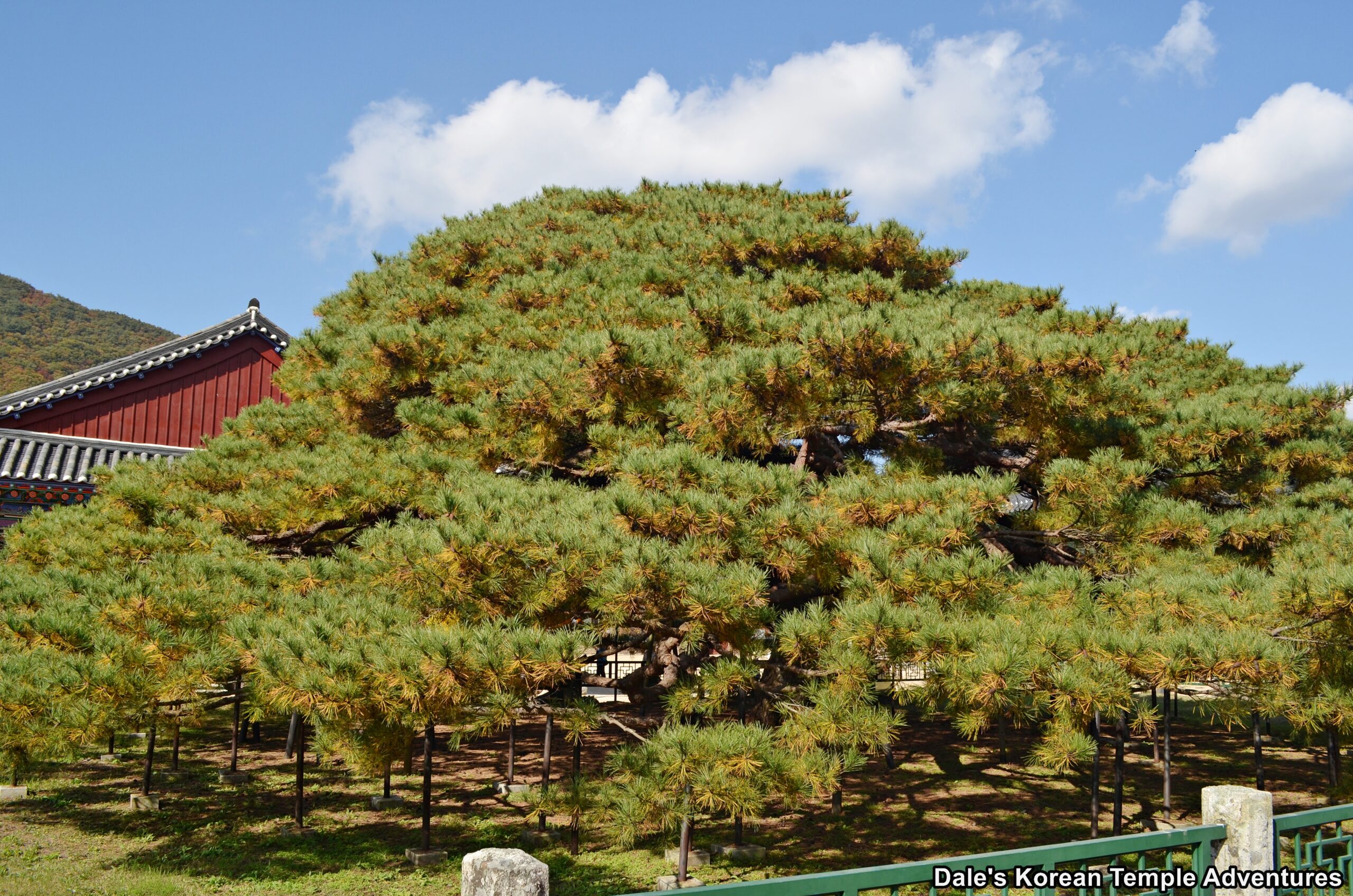
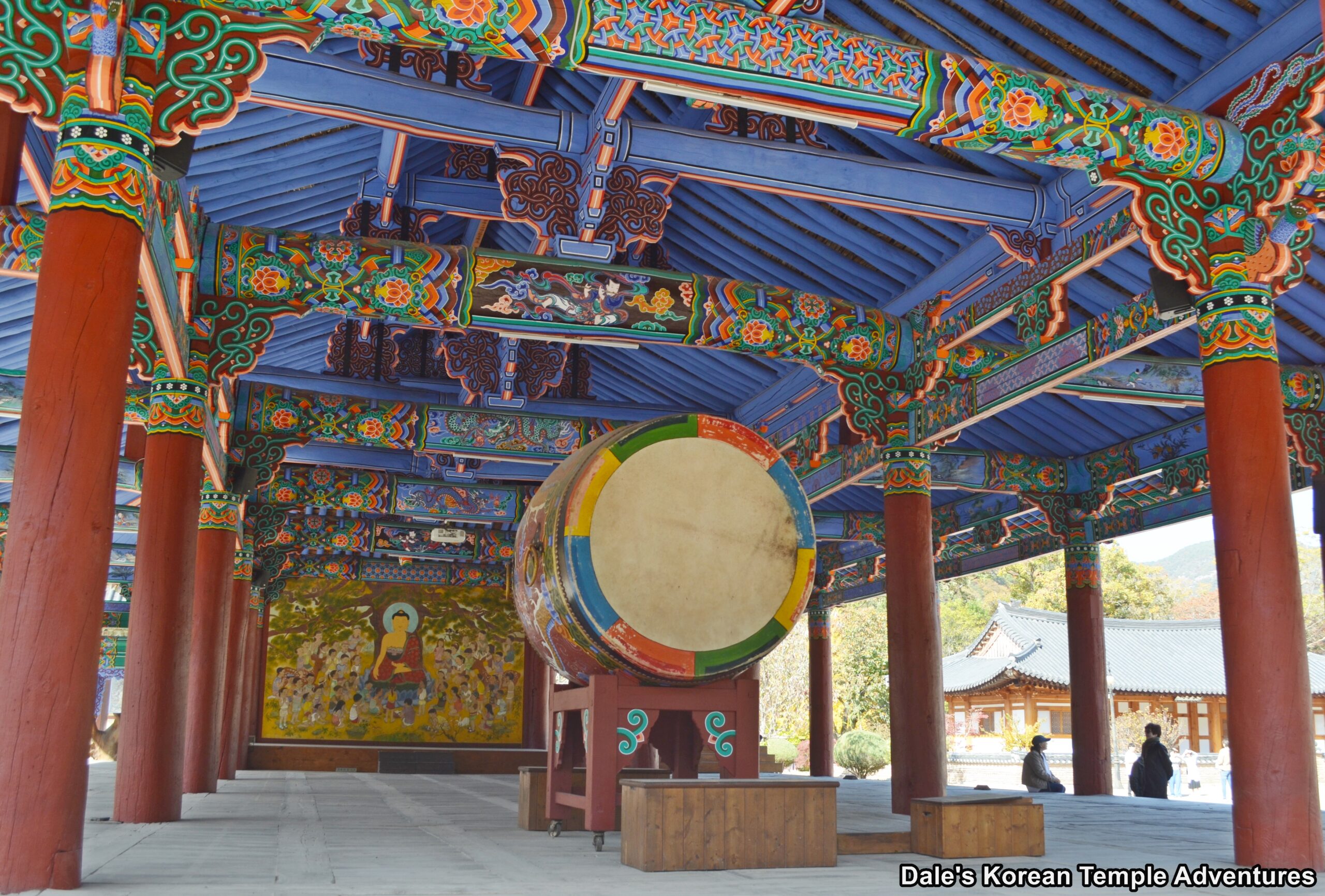
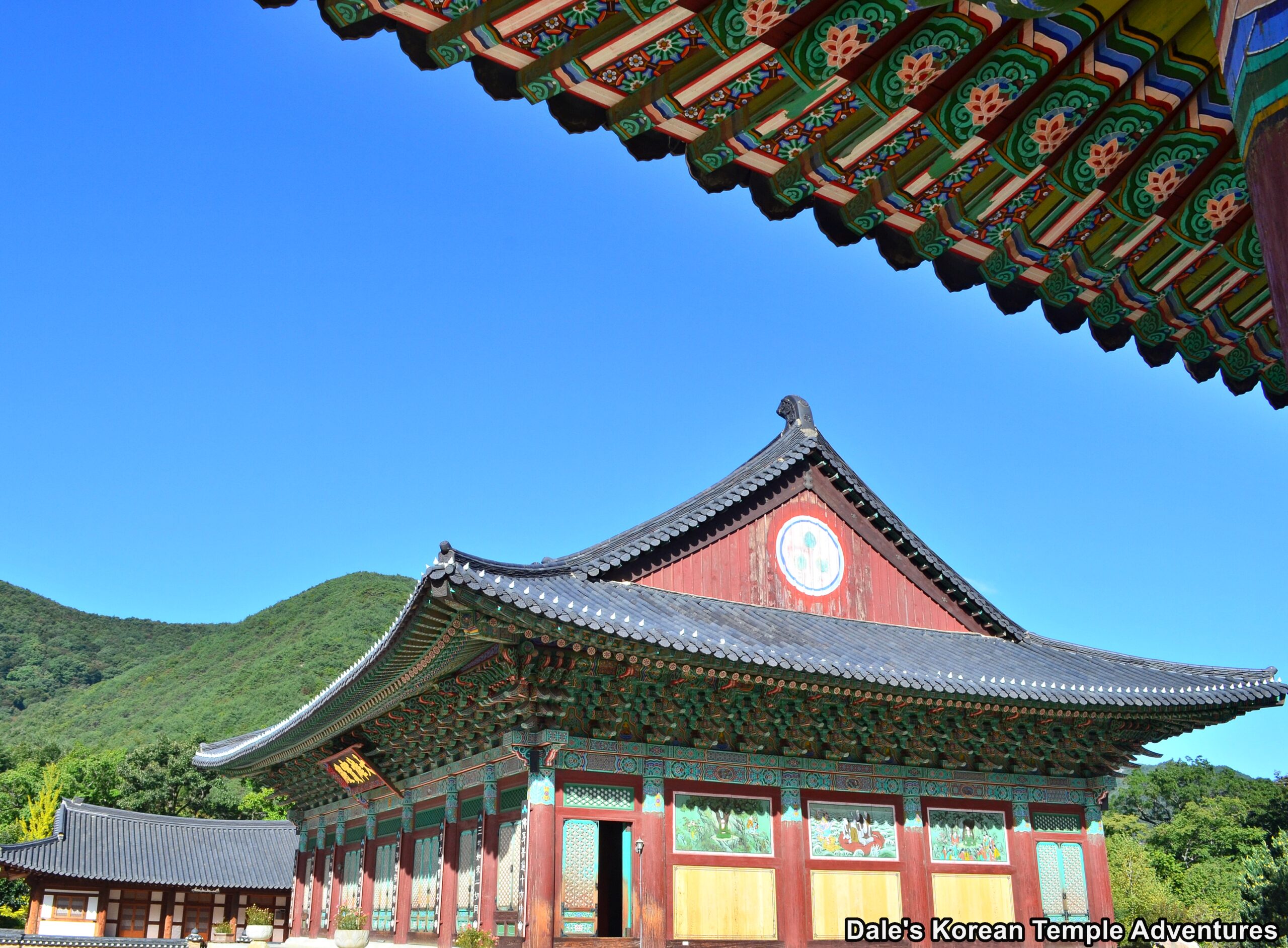
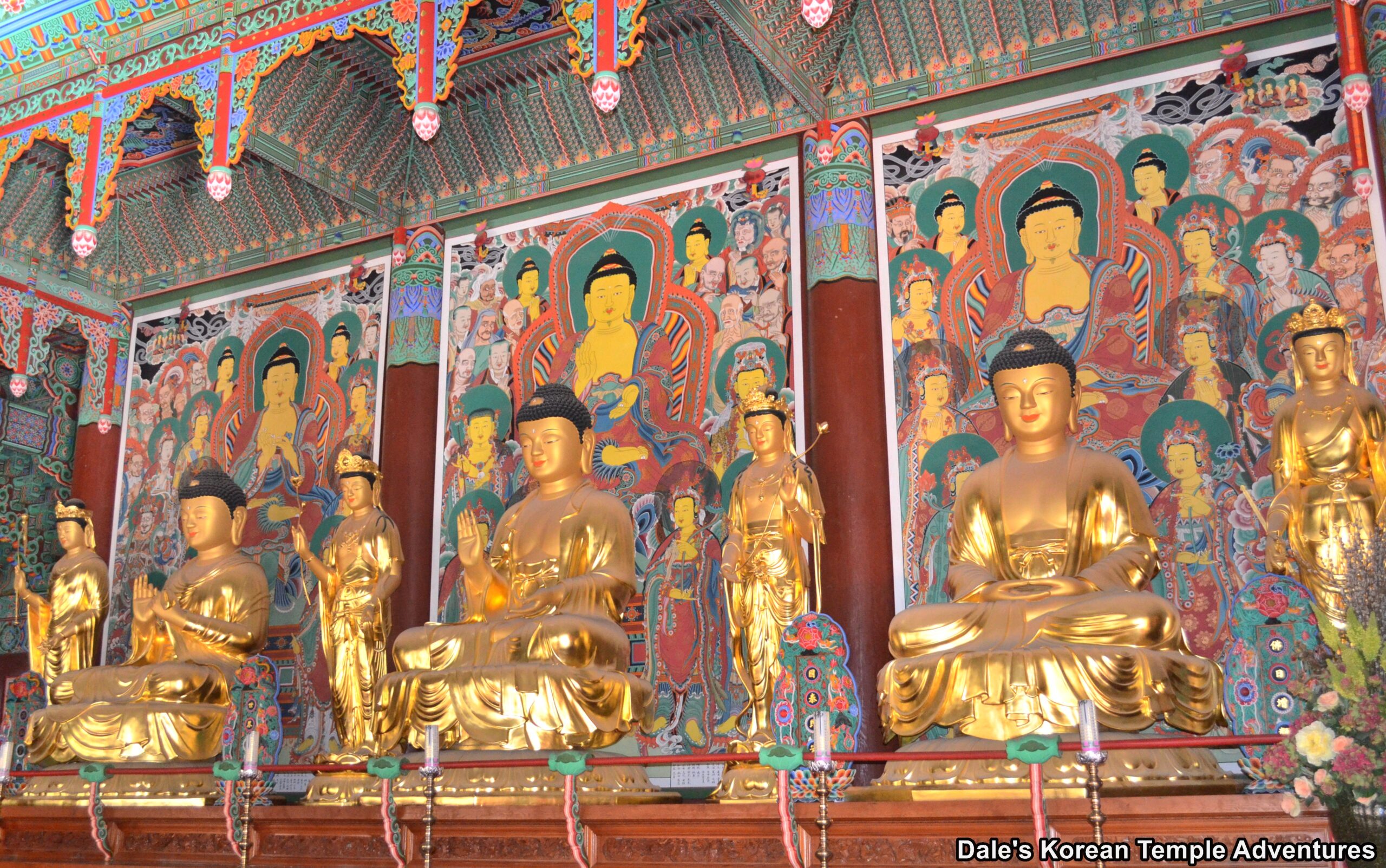
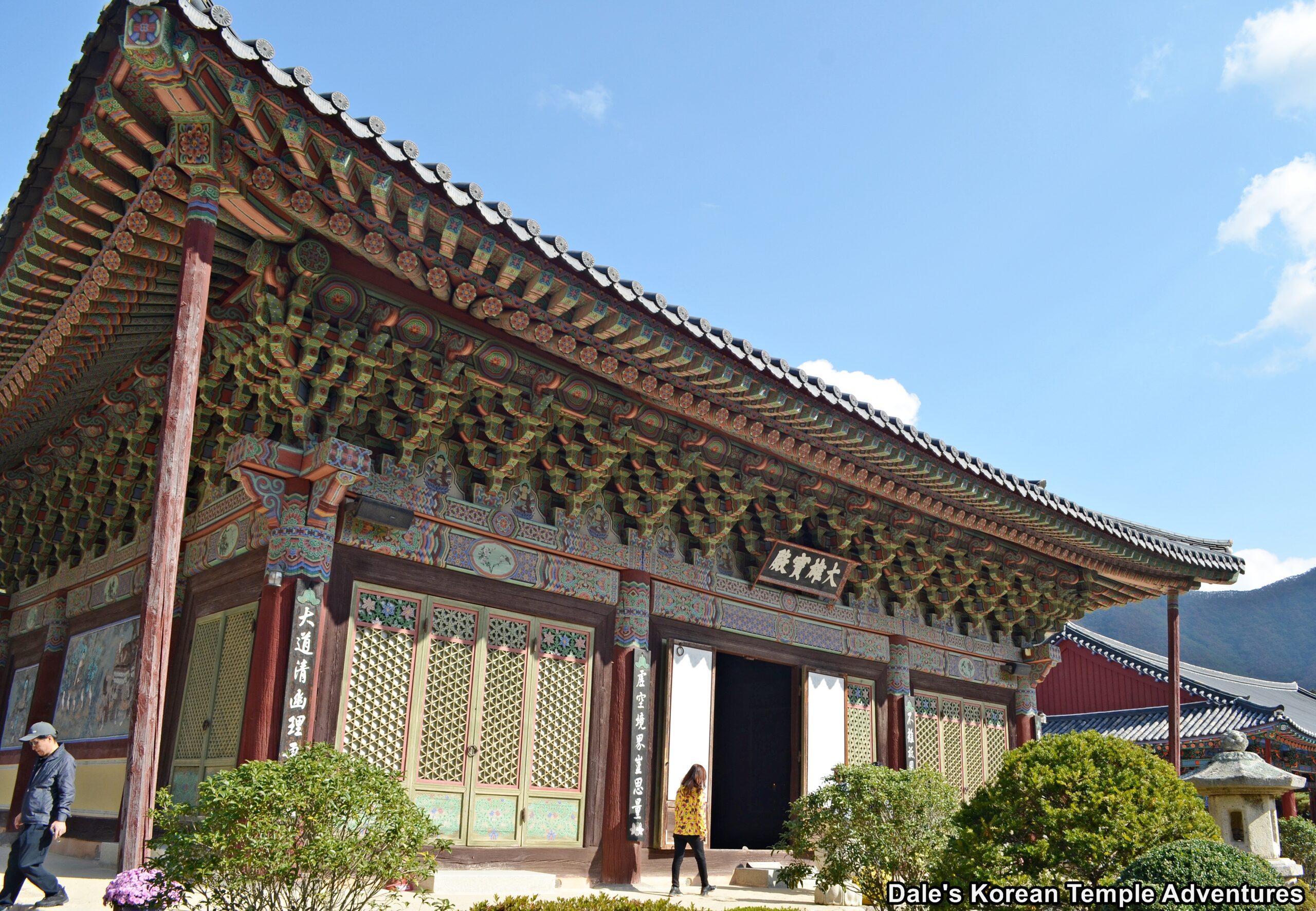
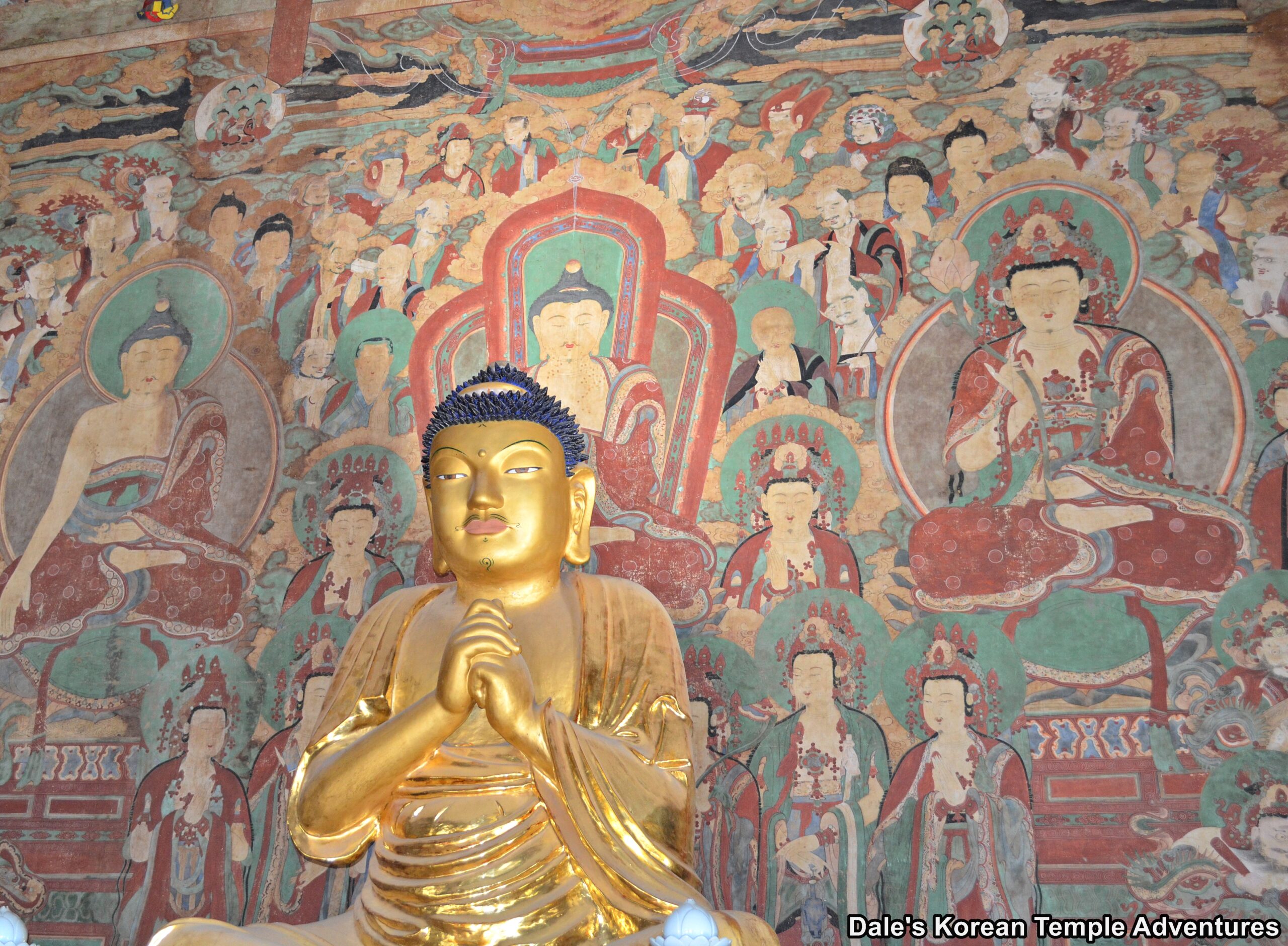
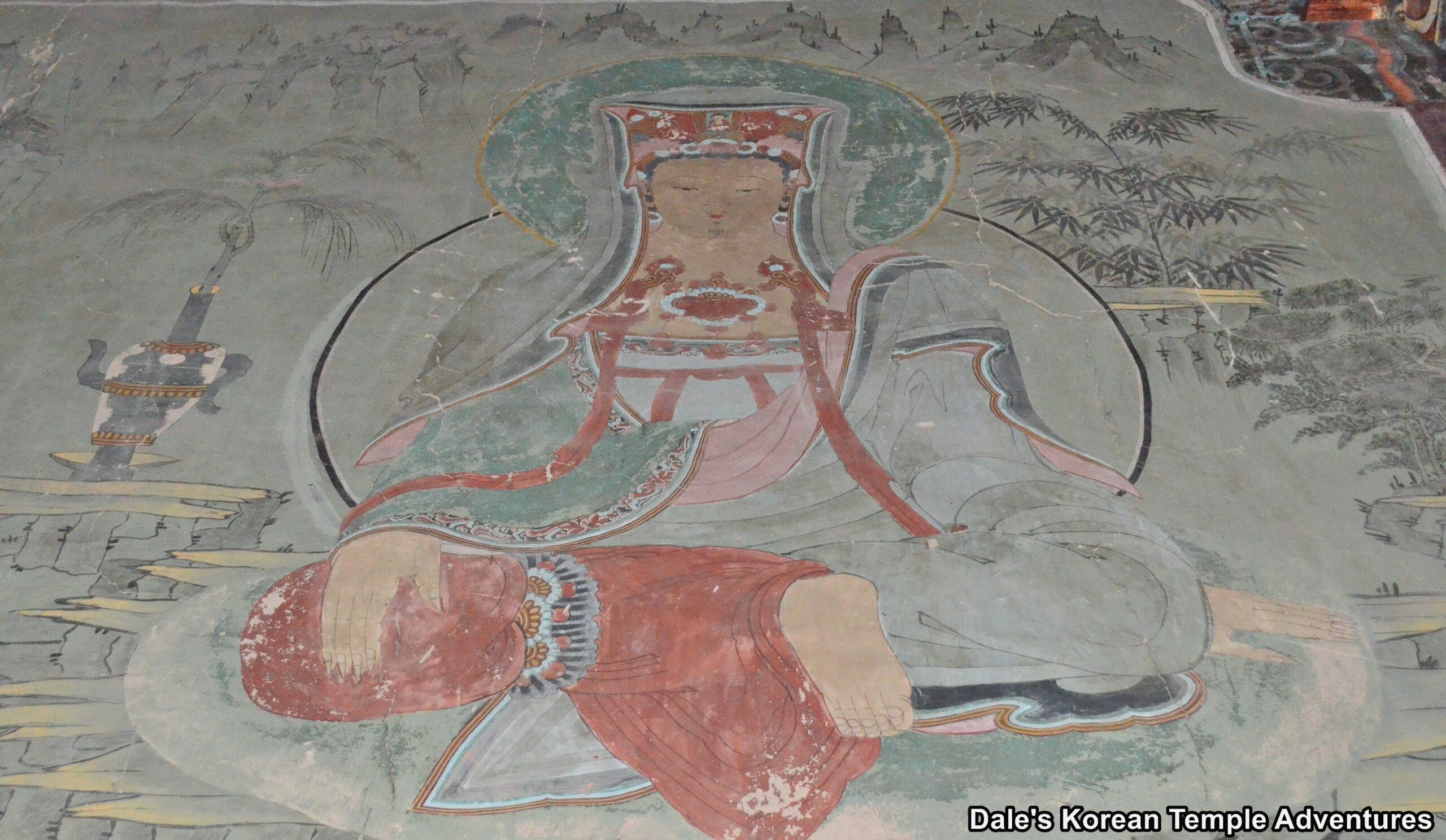
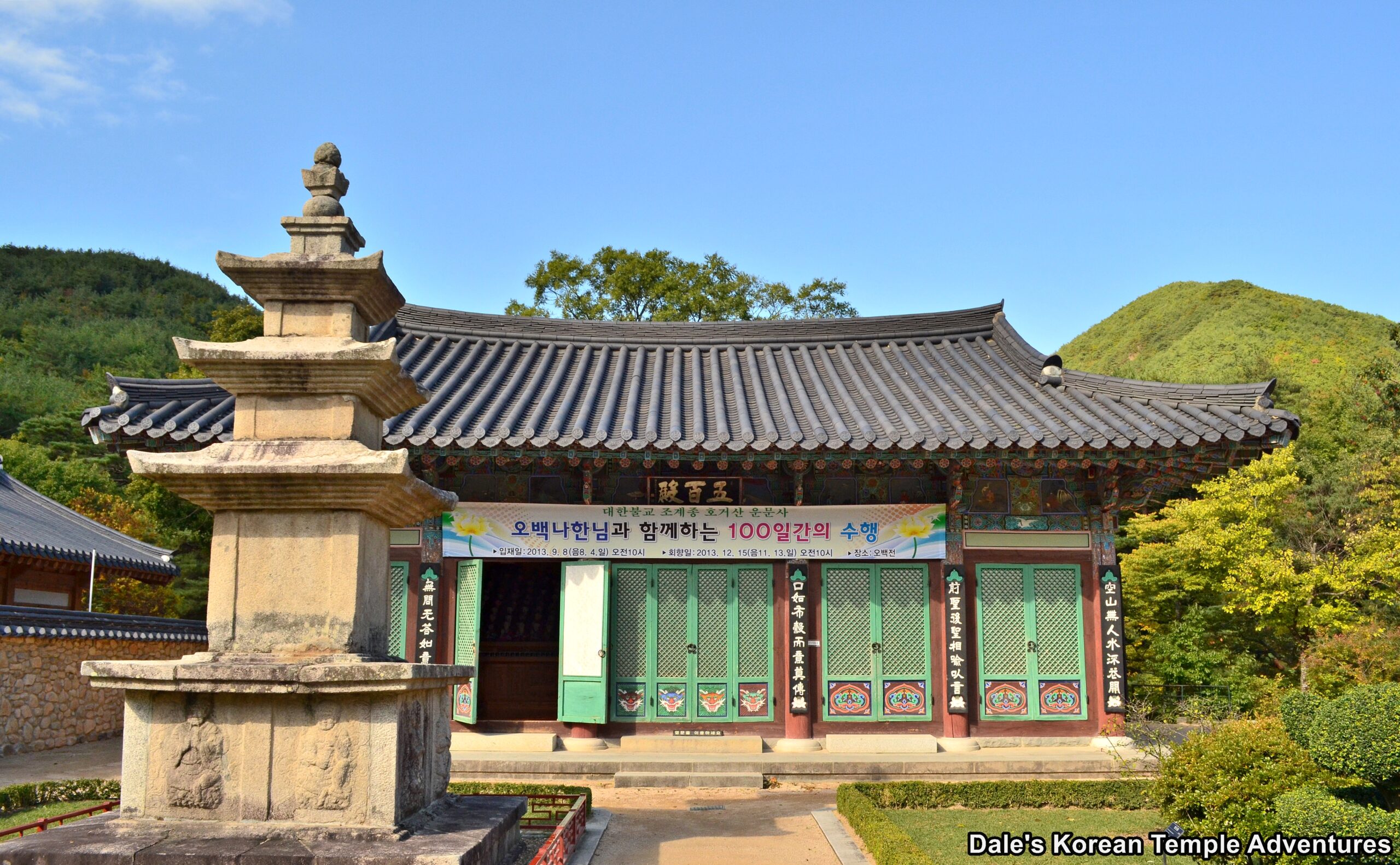
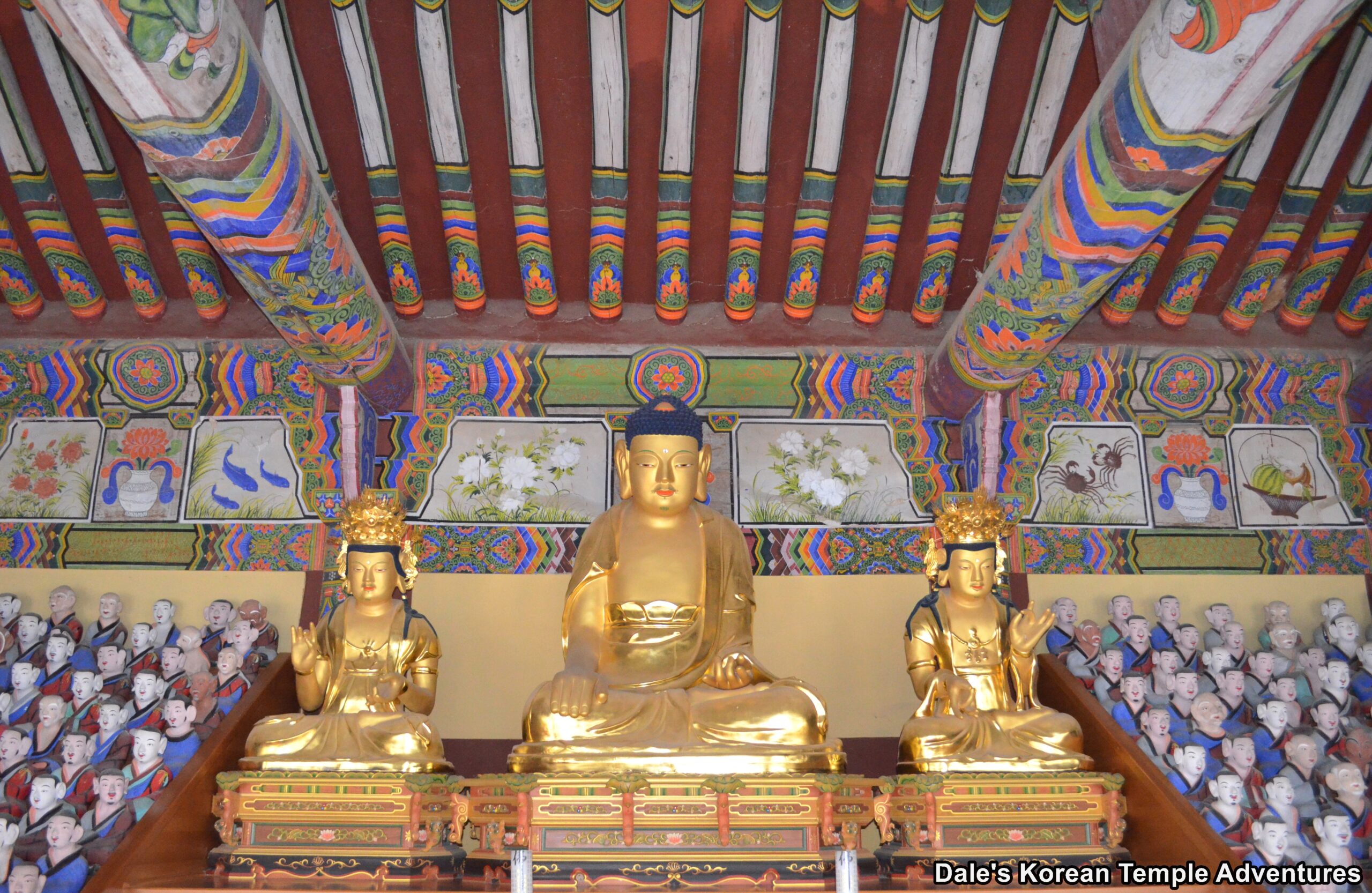
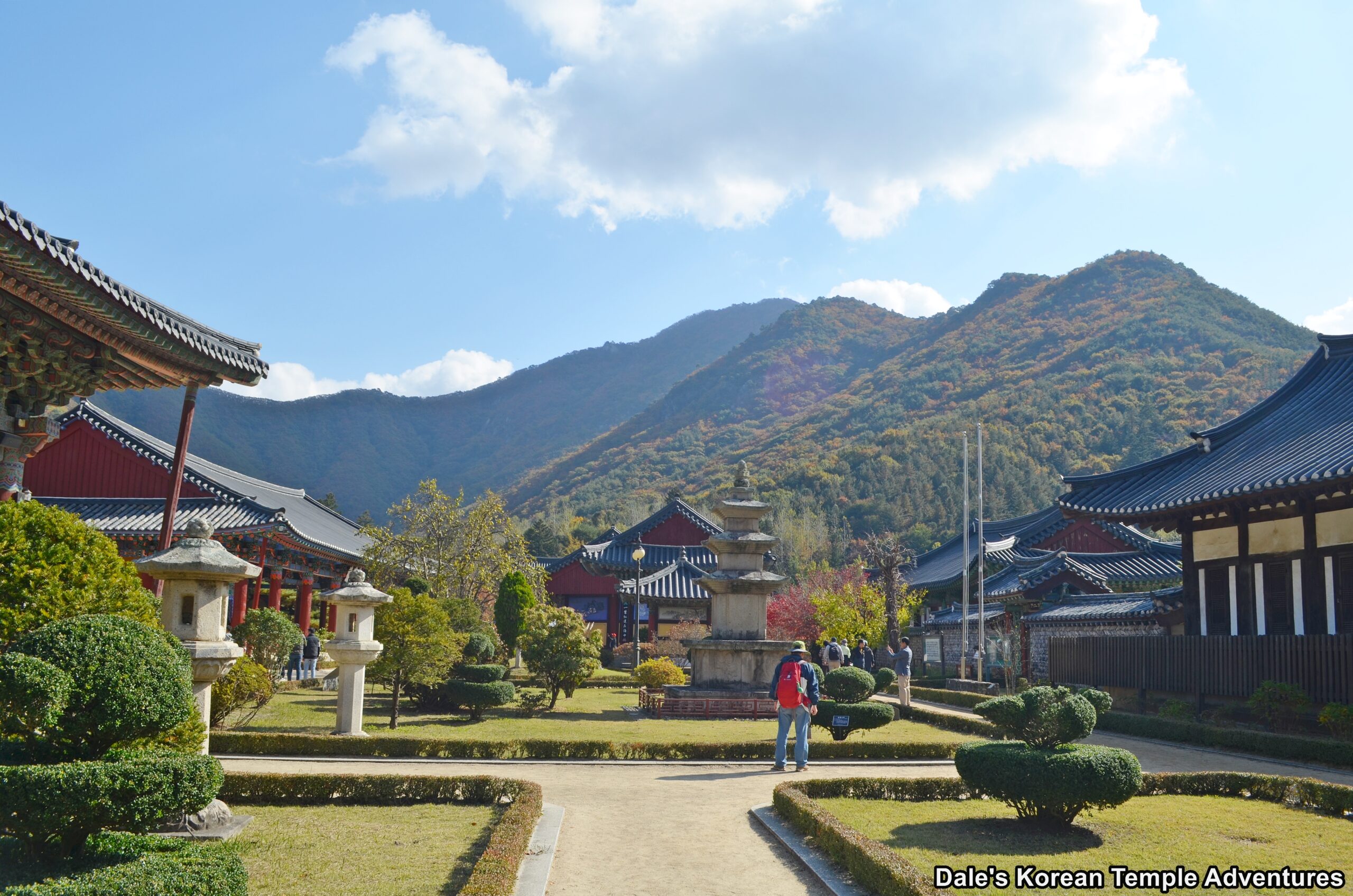
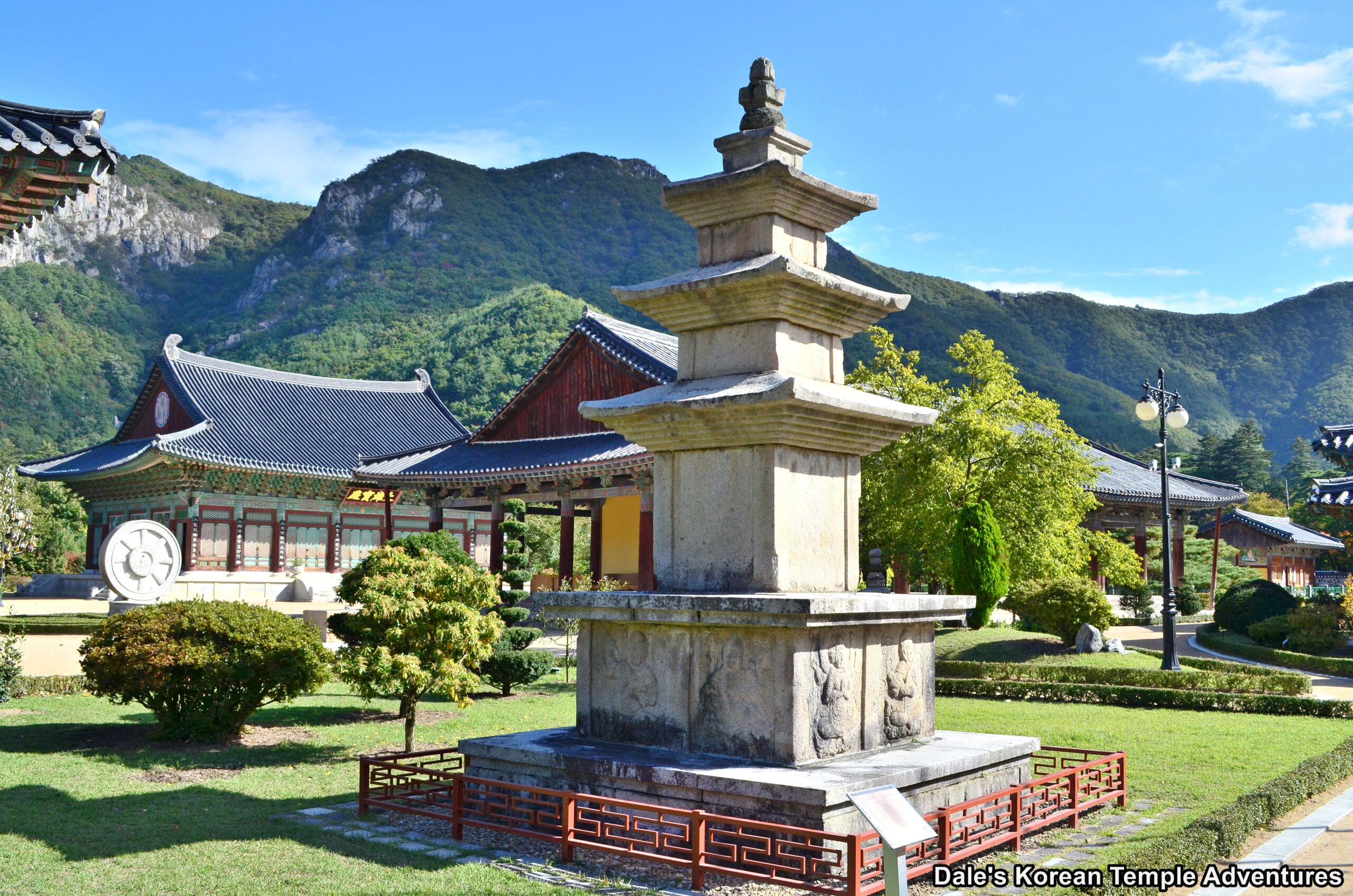
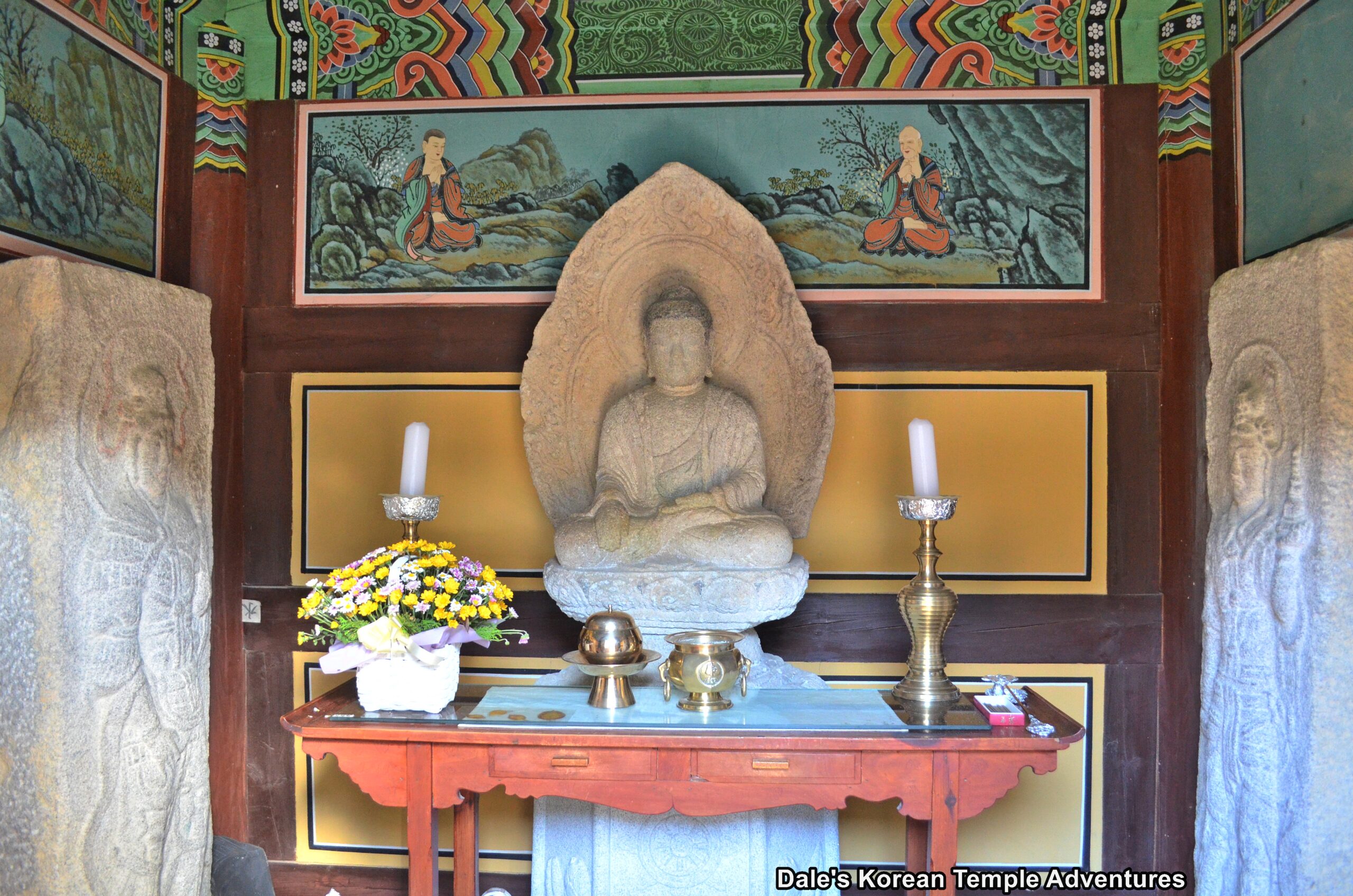
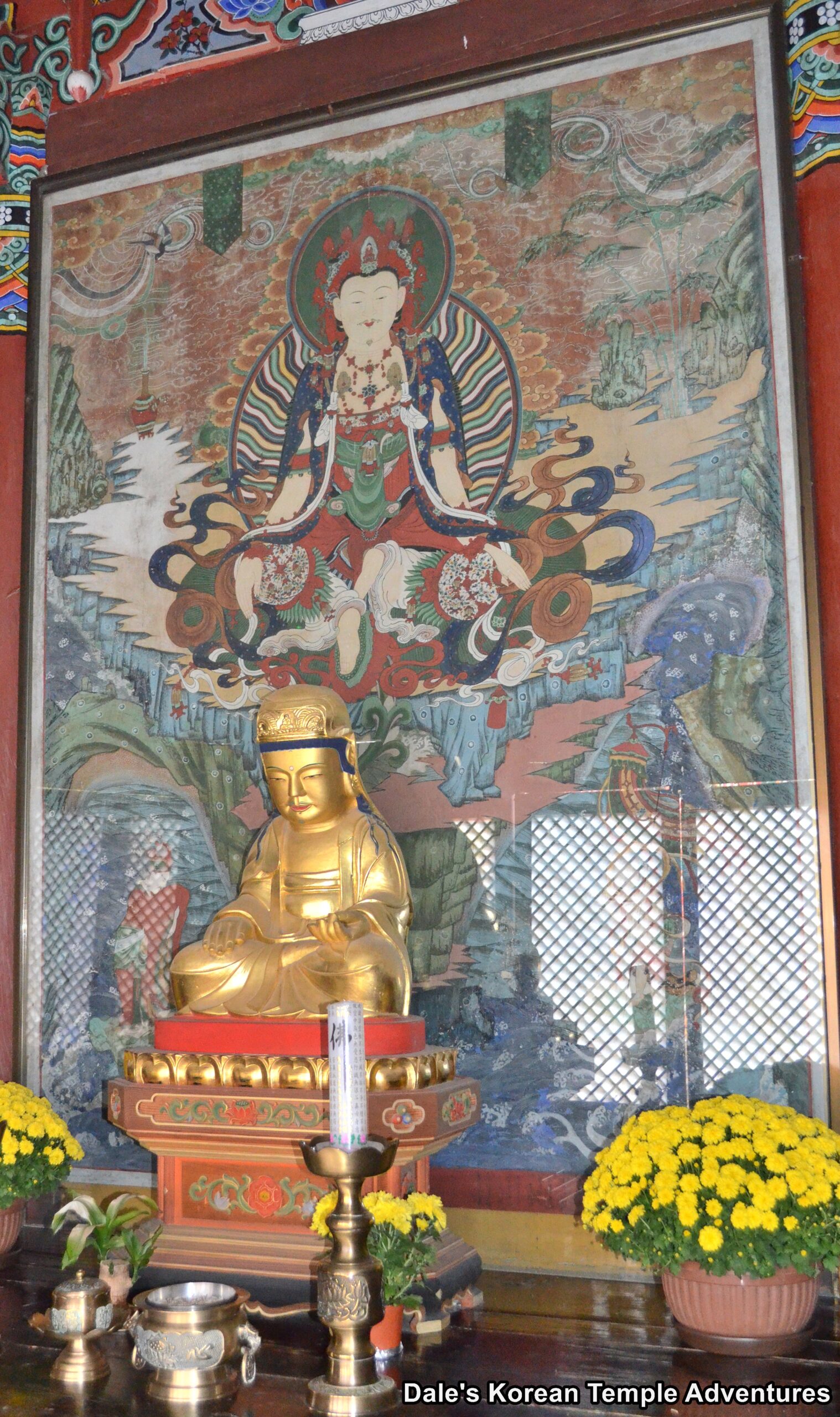
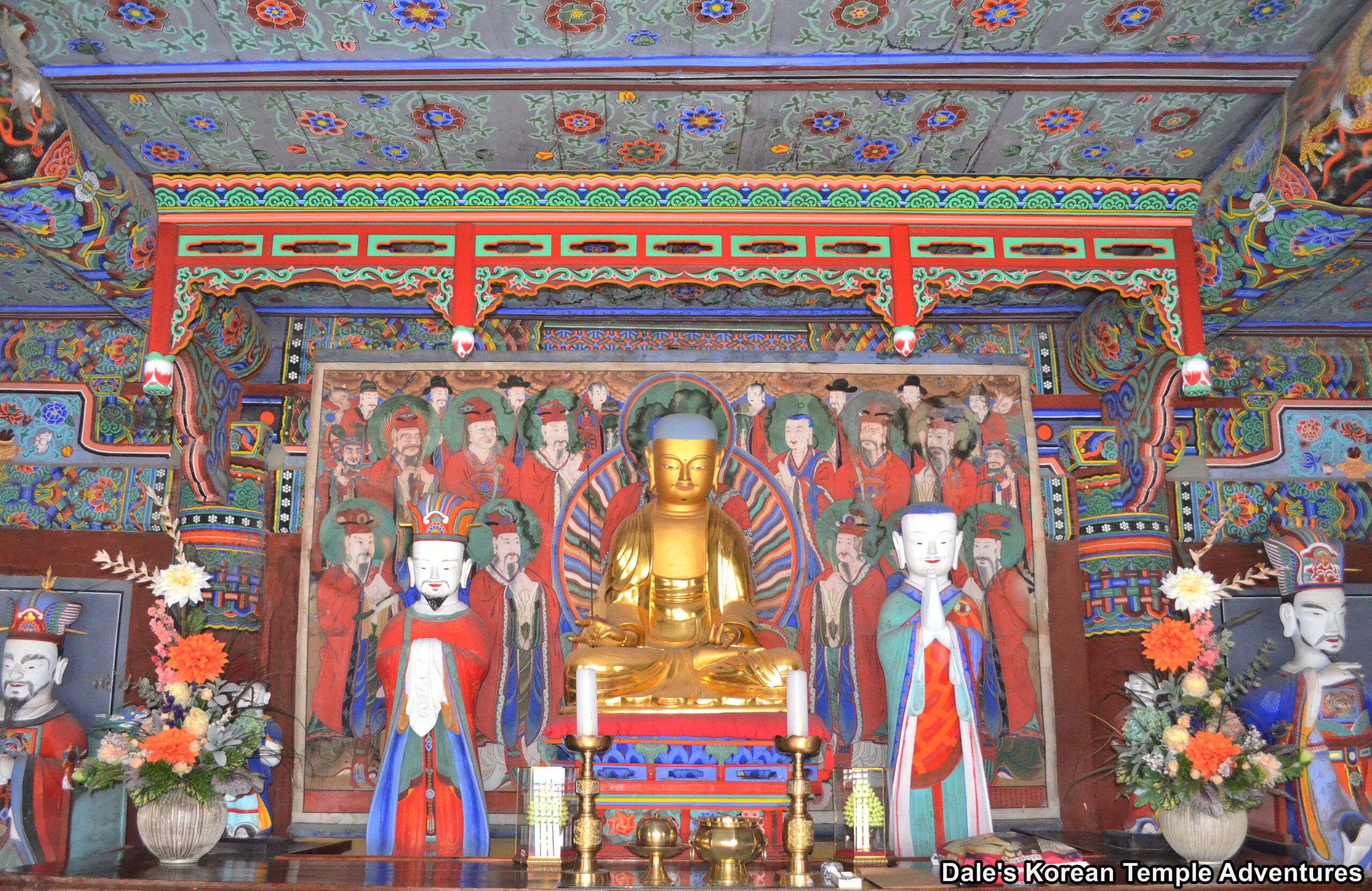
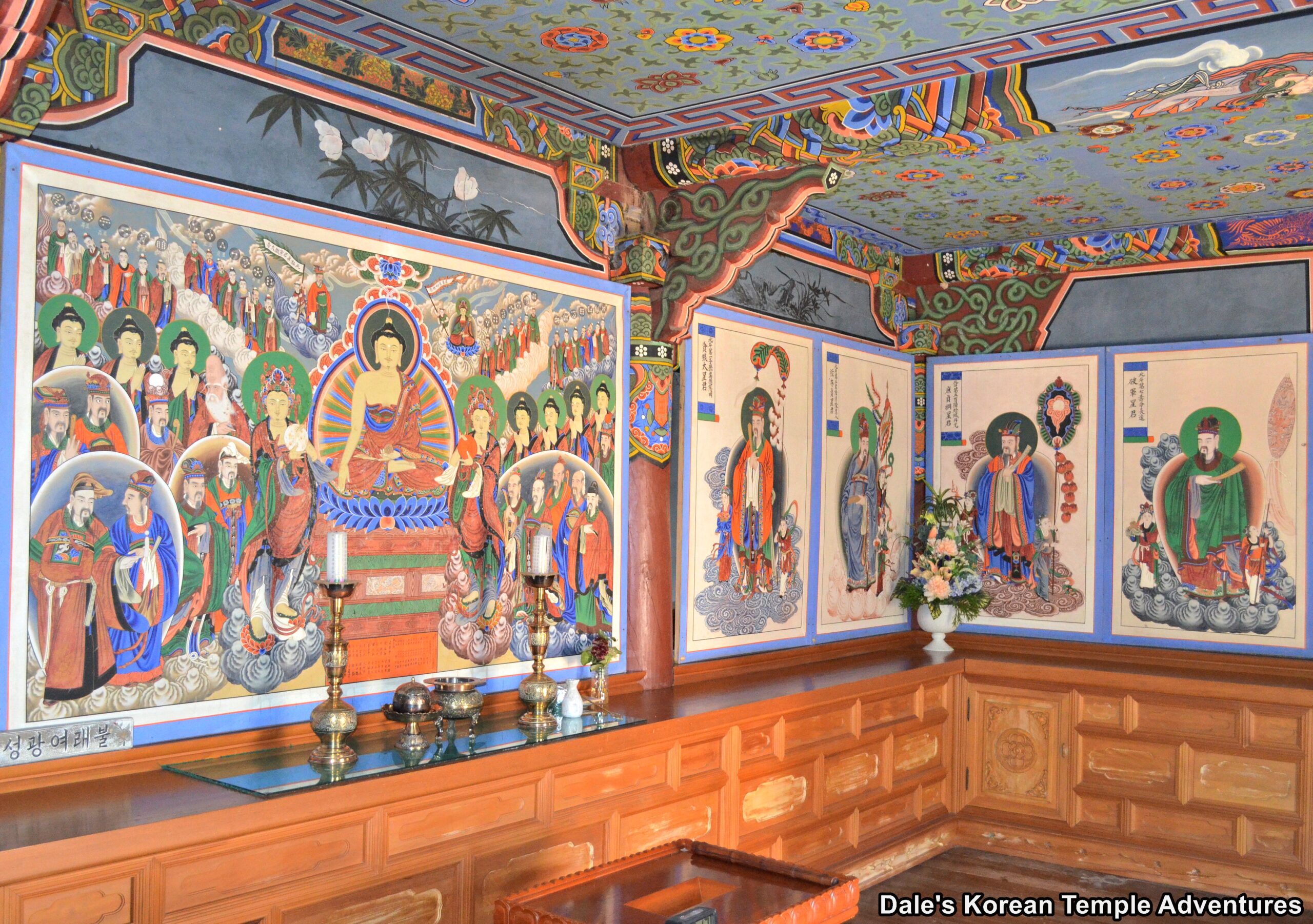
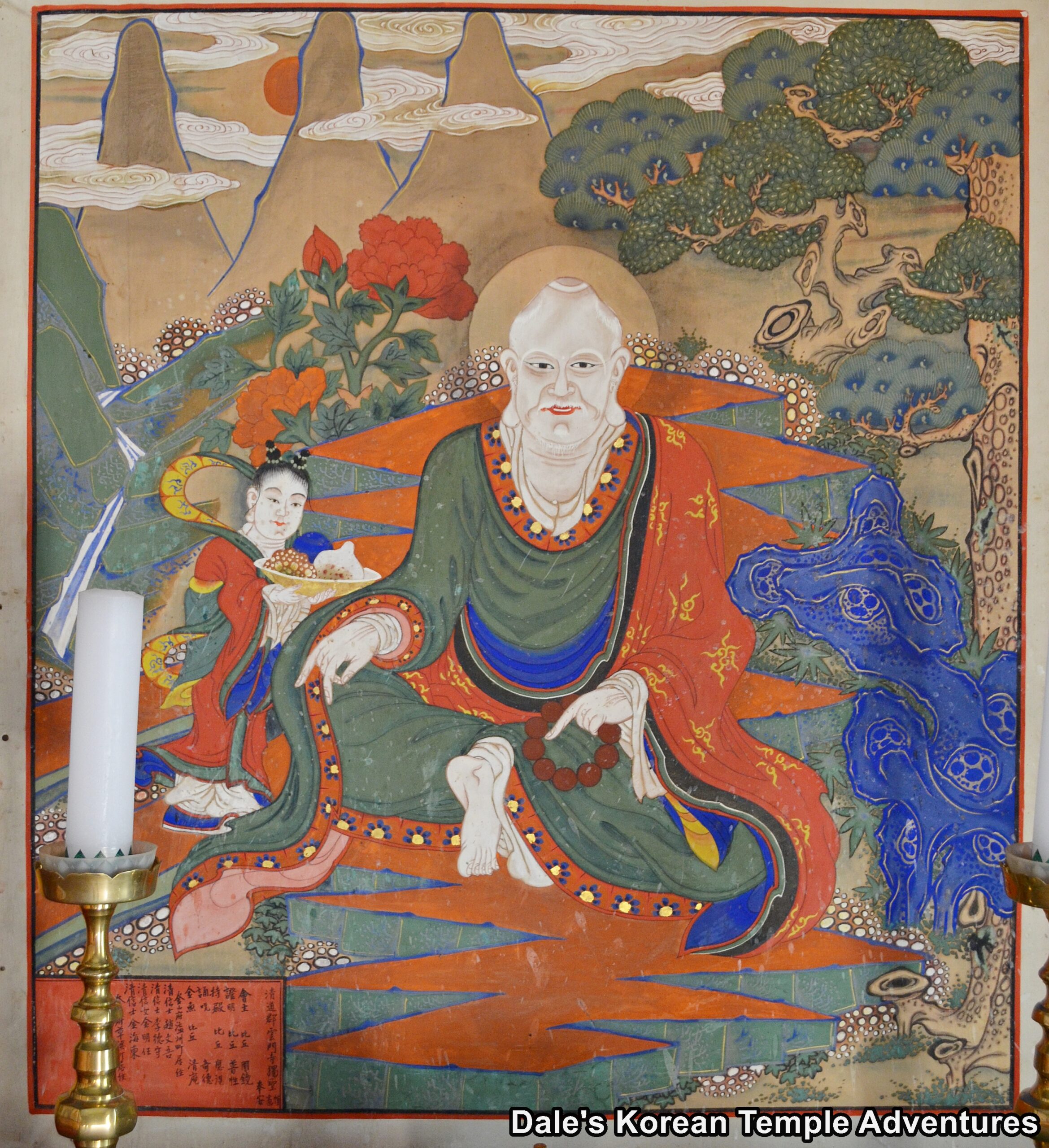
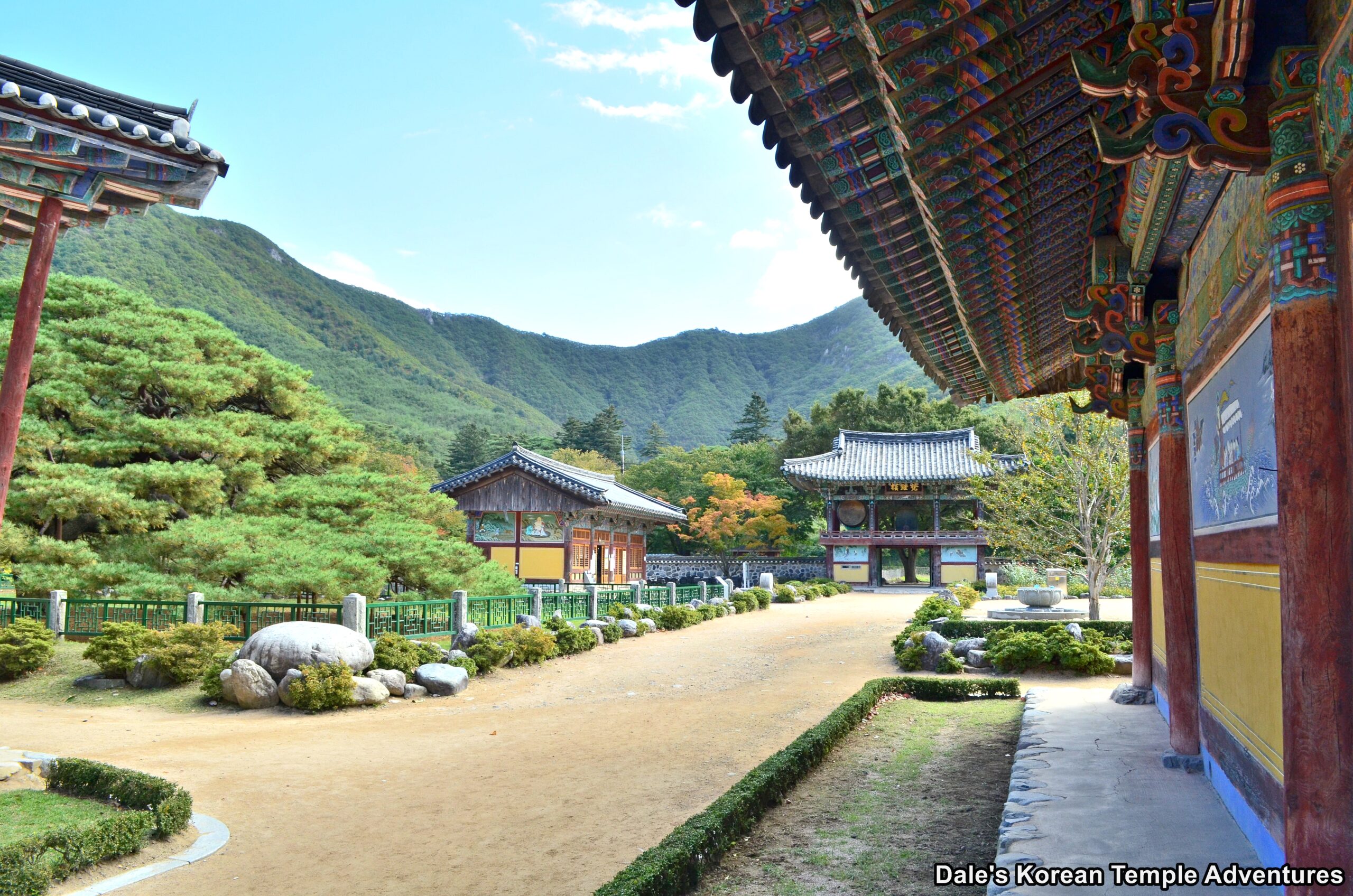
2 Comments
Sanford Gaines
To further explain the comment by Cassandra Labes Gaines, my wife, Un Mun Sa has special meaning for me because I was posted in Un Mun Myeon as a Peace Corps Volunteer during much of 1968 and into the spring of 1969, so I visited the temple on many occasions in all seasons. It is a wonderful temple for all the reasons you give, but it also has emotional resonance for me.
admin
I completely understand. I’ve had some wonderful experiences at Unmunsa Temple, as well, both with family, friends, and on solo adventures. I’m sure it was a very different place back then. So glad you have those beautiful memories. And thank you for sharing.